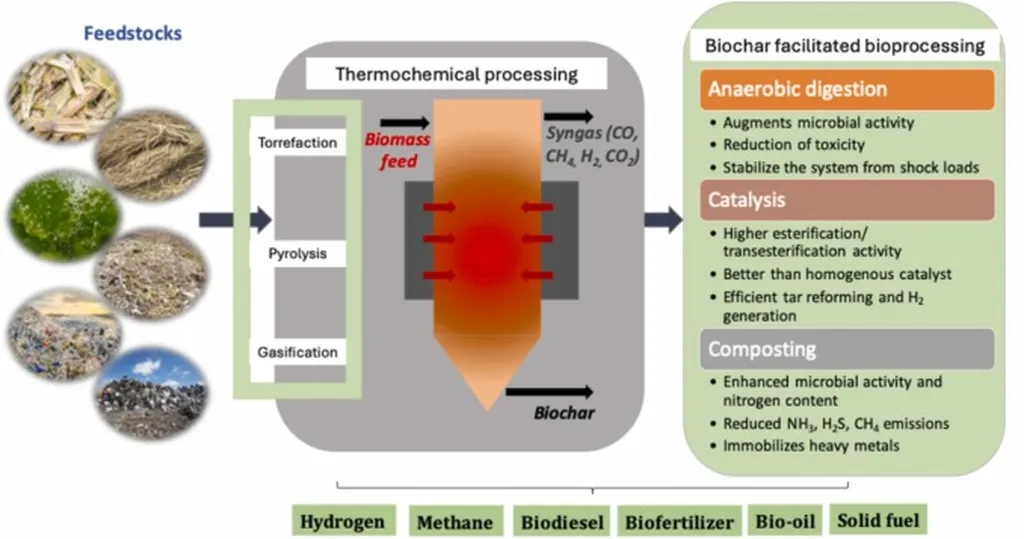In the heart of China’s Guangxi region, researchers are harnessing the power of machine learning to revolutionize environmental remediation, with significant implications for the energy sector. Yunpeng Ge, a leading scientist from the Guangxi Key Laboratory of Calcium Carbonate Resources Comprehensive Utilization at Hezhou University, has published a groundbreaking systematic review in ‘Frontiers in Soil Science’ (translated as ‘Frontiers in Soil Science’), exploring the potential of machine learning-aided design of engineered biochar for contaminant removal in soil and water.
Biochar, a carbon-rich product derived from the thermochemical conversion of biomass, has long been recognized for its potential in environmental remediation. However, the traditional trial-and-error approach to designing biochar for specific contaminants has been time-consuming and costly. Ge’s research introduces a paradigm shift by integrating machine learning (ML) algorithms into the design process, enabling rapid and precise optimization of biochar properties for targeted contaminant removal.
“This systematic review highlights the transformative potential of machine learning in designing engineered biochar,” Ge explains. “By leveraging ML algorithms, we can significantly enhance the efficiency and cost-effectiveness of biochar production for environmental remediation.”
The implications for the energy sector are substantial. Engineered biochar can play a pivotal role in cleaning up contaminated sites, such as those affected by oil spills or industrial waste, facilitating the reclamation of land for energy projects. Moreover, the integration of ML in biochar design can lead to the development of advanced materials for carbon capture and storage, further supporting the energy sector’s transition towards sustainability.
Ge’s review also underscores the potential of ML-aided biochar design in addressing emerging contaminants, such as pharmaceuticals and personal care products, which are increasingly detected in the environment. “As the energy sector continues to expand, the need for effective and sustainable remediation technologies becomes ever more critical,” Ge notes. “Our research paves the way for the development of next-generation biochar materials tailored to the unique challenges posed by these contaminants.”
The commercial impacts of this research are far-reaching. By streamlining the design process and enhancing the performance of biochar, ML algorithms can drive down costs and accelerate the deployment of remediation technologies. This, in turn, can open up new opportunities for energy companies to engage in brownfield redevelopment and other environmentally sensitive projects.
As the energy sector grapples with the dual challenges of meeting growing demand and mitigating environmental impact, Ge’s research offers a promising pathway towards sustainable development. By harnessing the power of machine learning, the energy sector can not only enhance its remediation capabilities but also contribute to the broader goal of environmental protection and restoration.
In the words of Ge, “The integration of machine learning in biochar design represents a significant step forward in our quest for sustainable environmental remediation. As we continue to explore the potential of this innovative approach, we are confident that it will play a crucial role in shaping the future of the energy sector and beyond.”

